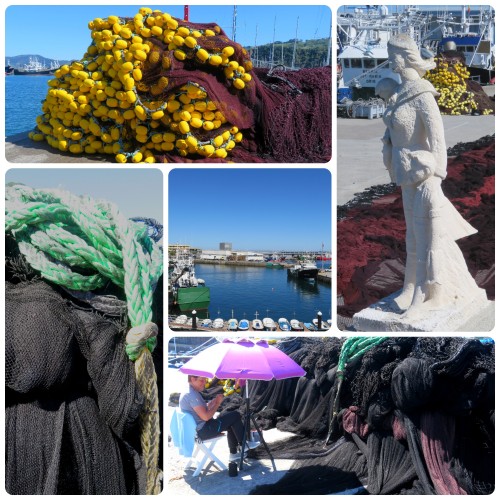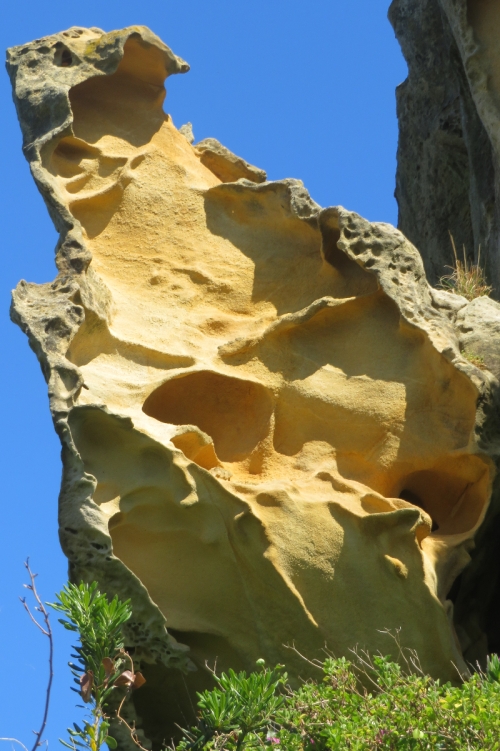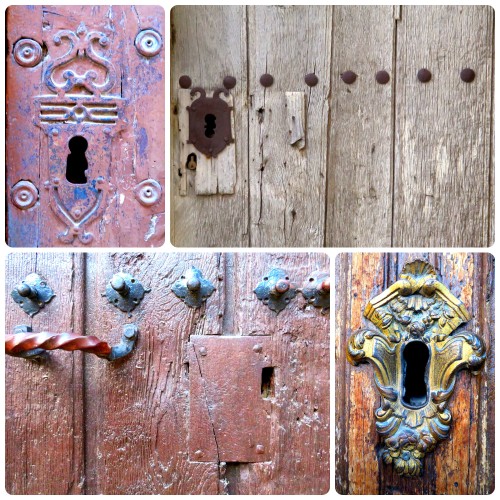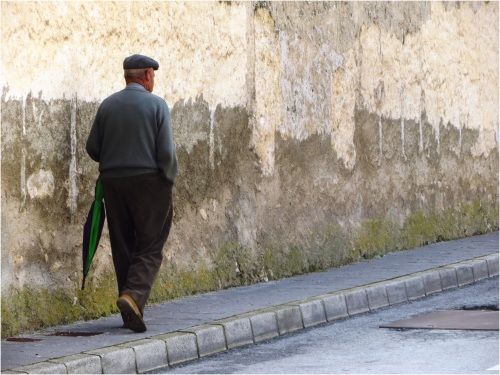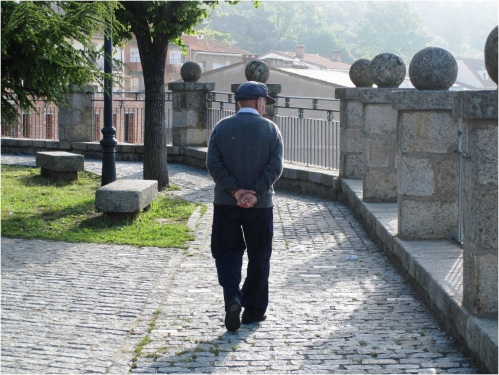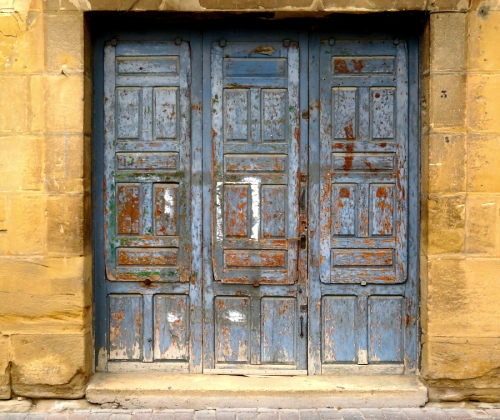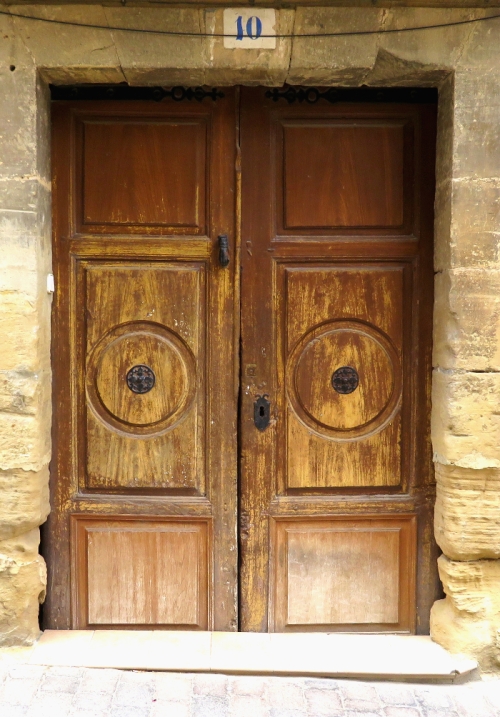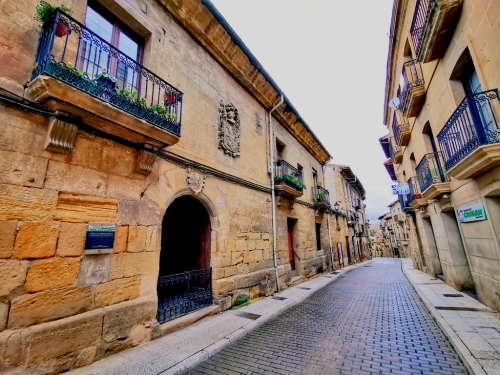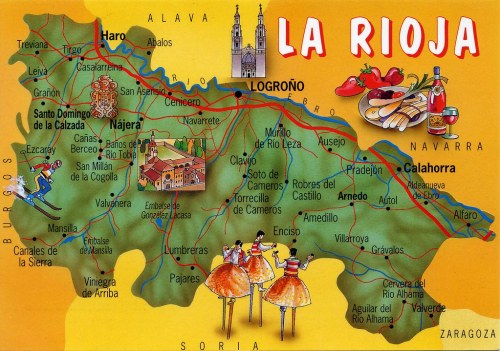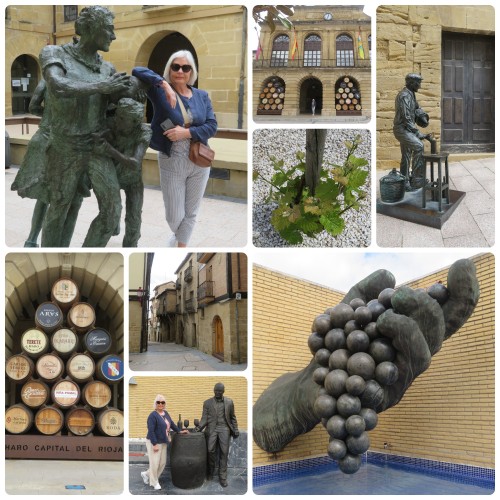This morning I woke early. I generally wake early. I really wanted a cup pf tea but it was only a small room and I feared that firing up the electric kettle would disturb Kim so I dressed as quietly as I possibly could, negotiated the creaky floorboards and left the room. I thought that I might take a walk down to the harbour to see if there was any fishing boat activity.
The sun was shining, the sky was blue, the sea was blue and fishing boat crews were completing early morning activities. A team of men carefully landed and folded an empty net and then went off somewhere, I suspect for breakfast or a sleep or maybe breakfast and then a sleep.
Around the port are old fish market warehouses which are no longer required and are undergoing restoration or maybe conversion into tourist attractions and harbour side restaurants because they are are no longer required for their original purpose because on the far side of the harbour is a modern fish processing factory of industrial proportions where all of the catch is delivered and processed and then efficiently dispatched all across Spain in a fleet of refrigerated HGVs.
No chance of going inside to take a look like this.
Fishing here is big business. Very big business. After Galacia further west along the coast, the Basque fishing fleet is the second largest in Spain. Although it only represents 2 % of the number of vessels, it has 19 % of the tonnage and 14 % of the power. In the harbour this morning the huge steel clad trawlers were laid up, their job done for now, ready to sail again later no doubt.
In Spain they eat a lot of fish but not as much as people in Portugal who eat more fish than any other in mainland Europe, fifty-seven kilograms per head per year which is like eating your way through an average sized cod or tuna, Norway is second, Spain third and then France and Finland.
In the UK we like to think of ourselves as fish eaters and we voted to leave Europe on the basis of getting our fishing fleets back but we only eat cod or haddock or anything else from the same genus ( hake, colin, pollack etc.) and on average we eat a miserly fifteen kilograms per person per year.
In mainland Europe, those who eat least fish are Albanians at only five kilograms followed by people from Serbia and North Macedonia and what is surprising is that none of these are really that far from the sea.
The most popular fish in the UK is cod and in the USA it is prawns (shrimp), Canada and in Australia it is salmon; in France it is sea bass and in Spain hake. The most popular Christmas Day meal in Australia is prawns (shrimp).
After an hour or so I returned to the room, Kim was awake so I could safely boil the kettle. She had improved and I told her where I had been and she said she wanted to do that so after a croissant for breakfast we went out and I did it all over again.
Mid morning and the port was getting busy, day trippers of course but also workers. Sitting under umbrellas to shield from the sum local women were busy mending nets. The nets were huge so how they knew which bit to mend I have no idea but they seemed to know what they were doing.
I used my Google translator to tell them that I lived in a fishing port town called Grimsby in the east of England, they smiled very politely and carried on working. They had no idea what or where I was talking about.
This is Grimsby…
This is Getaria…
Rising above the port was a headland walk. It looked tough but Kim declared herself fit enough to tackle it so off we went.
It was just a gentle climb and every twist and turn along the path provided a view or photo opportunity.
A rock carving…
And an eagle…
So, we walked to the top to an abandoned lighthouse and what was once a cafeteria, admired the views and walked back down again.
At the bottom of the path there was a seafood restaurant, not one of the posh ones in the town centre with tablecloths and high prices but rustic and reasonable and full of local people so we took that as a good sign and ordered plates of squid and shellfish. It was so good that we agreed we should return later for evening meal.



